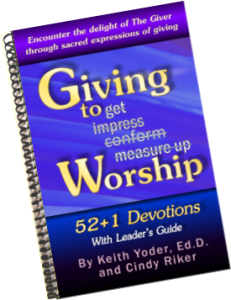 Last Sunday, May 24, was Pentecost Sunday, sometimes observed in churches, sometimes missed. The pastor where we attended gave a wonderful account of the history that pre-dated Pentecost. And I also did a little digging. Oh that we were more aware of our roots! It would make the fruit much more delectable!
Last Sunday, May 24, was Pentecost Sunday, sometimes observed in churches, sometimes missed. The pastor where we attended gave a wonderful account of the history that pre-dated Pentecost. And I also did a little digging. Oh that we were more aware of our roots! It would make the fruit much more delectable!
According to the Jewish calendar, there are two ‘Firstfruits’ celebrations, the earlier occurring one day following the Sabbath after Passover, the second, or latter, occurring 7 weeks later. The first celebration (Nisan 17), outlined thousands of years before Christ, actually coincides with the resurrection of Jesus, “the firstfuits of the harvest; then all who belong to Christ will be raised when He returns.” (1 Cor 15:23). The Hebrew root of bikkurim (firstfruits – “a promise to come”) is the same as bekhor (firstborn). On this day of celebration, barley grains are waved as a consecrated offering before the LORD. No one is to consume any of the harvest until it is first offered before Him, the Lord of the Harvest. In fact, the farmers would note the first growth out of the ground and mark the shoots, often with red yarn, and declare them to be ‘firstfruits.” During this waving celebration the people are assembled together. There are times a ‘heave offering’ would be lifted up, designating something for a higher purpose as hands holding it are raised and lifted up toward Heaven. Whether heaving upwards or waving back and forth before the Lord and in front of the people, it was a demonstration and consecration as unto the Lord. It is a picture and display of love and of obedience; it is a time of thanksgiving and praise; it is an offering of worship.
The second celebration, called the Feast of Weeks, is counted 50 days after the Sabbath of Passover, coinciding with the giving of the Torah, the law written on tablets of stone after deliverance from bondage in Egypt. These days are counted out with great anticipation. This day just also ‘just happens” to coincide with the Day of Pentecost, the giving of the Holy Spirit, the offering of law written, not on stone but on our hearts. During this celebration, 2 loaves of bread baked from the finest and first of the wheat grain were waved before the Lord, expressively demonstrating dependence upon God for their daily bread, recognizing that all they had was from His hand, and worshiping Him as they returned a portion.
As we come together with grateful hearts to bring our offering, a portion symbolizing the multitude of gifts from our generous God, worship is a result. And as we come together to worship with hearts of love, giving of our best is a natural outcome as well. To Him. To others. There is a kind of weaving between bringing the best that we have (since it’s all from His hand) and worshiping Him. Worship and giving in response to one another, it’s hard to know where one begins and the other ends – or do they end? Maybe if we “heaved” and “waved” what we have been given unto the Lord, we would have a deeper sense of true consecrated giving and experience this beautiful form of community worship. Shall we try it?
